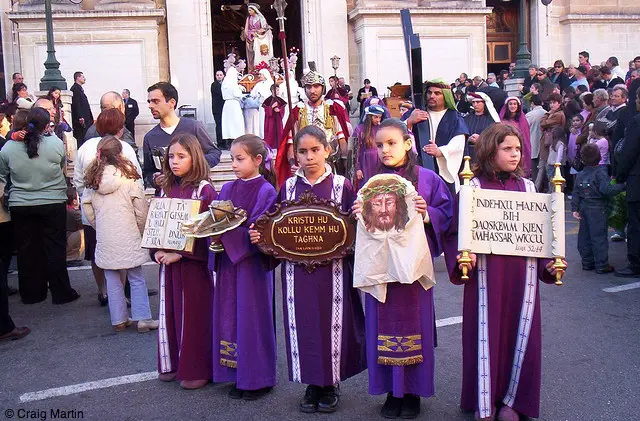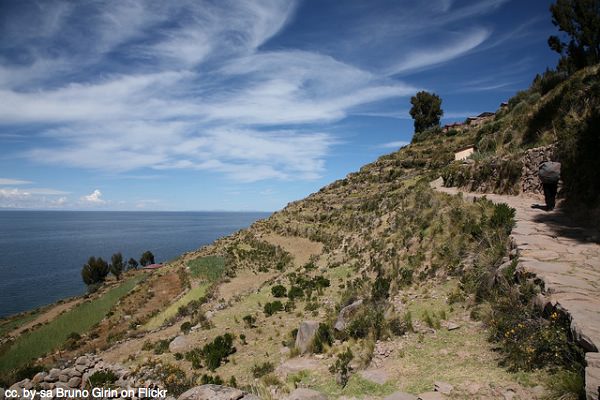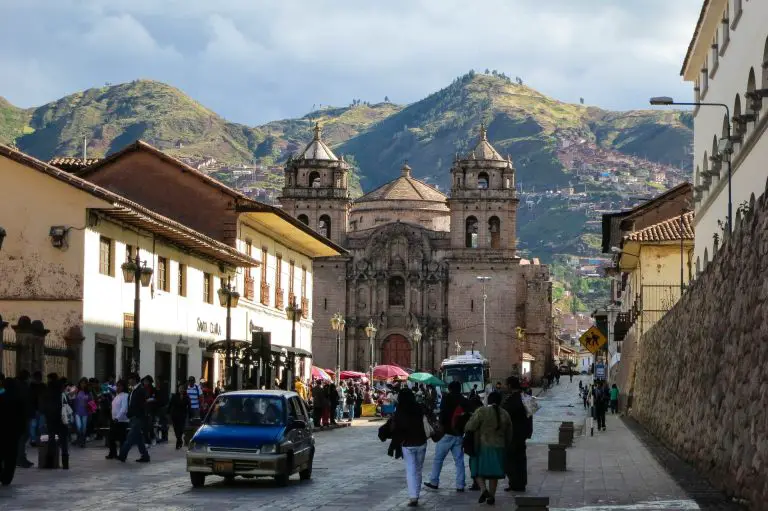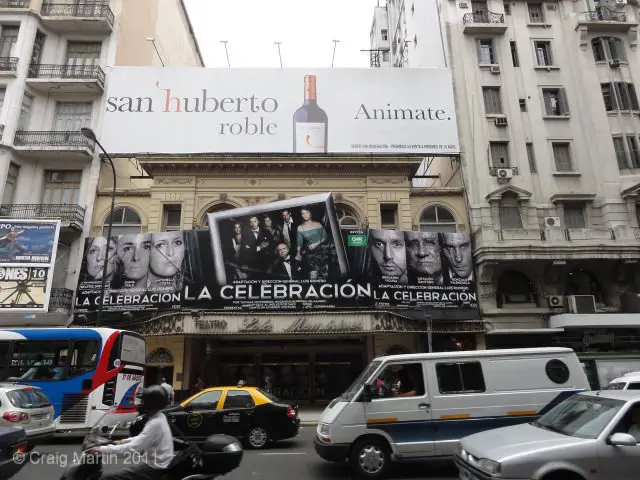Cruising Titicaca: Amantani Island and natural religion
In this series we look at the towns around Lake Titicaca in Peru and Bolivia as well as the commonly visited islands and attractions nearby. Last week we looked at Puno and the floating islands of the Uros.
Amantani
Having passed most of the eastern side of the island, we turned neatly and tucked into the little stone harbour sitting at the base of agriculturally sculpted green hills. The harbour at Amantani reminded me of cruising around the north of Greece: crystal-clear water, underwater weeds housing tiny fish, people working on renovating the approach.
We disembarked and made our way up stone steps, panting with the altitude, until we reached the top. Several people stood in black clothing, set off by white shirts on the guys and colourful blouses and scarves on the women. After a roll-call matching us tourists with our hosts, we followed our hostess to her house and feasted on a lunch consisting of quinoa soup and vegetables. Spanish was little use to us here: with no common language, communication was simple and functional. Place to sleep, place to eat, warm words of thanks.
Prices:
We paid around 70 soles for our tour, which included hotel pick-up and drop-off, the boat and crew, a guide, access to three islands (Uros, Amatile and Taquile), lunch and dinner on day one, breakfast on day two. We also paid five soles for gifts for our host family, six soles each for a short boat trip, five soles on drinks, 15 soles for lunch on day two and around 25 soles on handicrafts each. Total cost for two days, 126 soles per person, around US$45.
Quinoa is a grain popular in Peru and Bolivia, and is ascribed near-magical abilities by many. In fact, the 70-something year-old Bolivian football representative I later met assured me it was better than viagra. Most of the people I’ve spoken to describe its ability to give amazing energy to hardy farmworkers, but this … Well, I’ve always wondered what farmworkers get up to on those long, after-lunch “siestas”. I’m sure that’s not the real reason it’s fast catching on as nutrient-rich food in western diets.
In any case, all of that energy was needed for our afternoon excursion: the climb to Pachatata. As it was explained to us, local religion focuses on an inter-relationship between life and death, the earth mother and father, and an ethics system incorporating community justice. It was to the temple of the Earth Father, Pachatata, that we were to climb. We were given handfuls of coca leaves to offer at the temple and also told we could chew them to combat the effects of the altitude and, just maybe, get a little high.
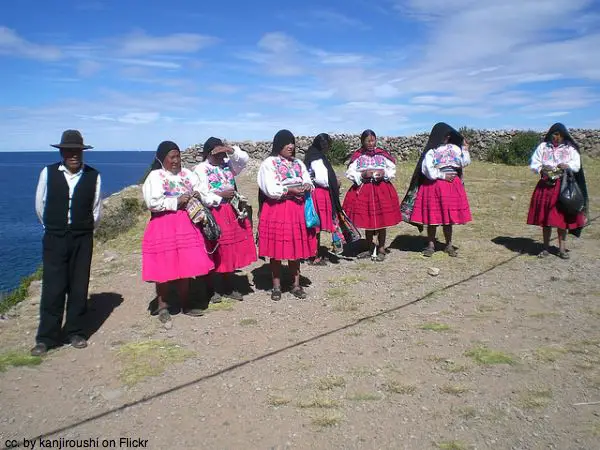
Chewing furiously and panting slightly more furiously, we ascended the modest slope on an uneven stone path. Our group of 30 or so resembled straggling sheep; our guide unconcernedly waiting for us every now and again. When we reached the summit and, faced with a high block wall, turned left I realised we had been in a race with several black-clad women, hoisting large black blankets over their shoulders. These middle-aged ninjas had silently sped up the hill paths around us, and several had beaten us to the summit.

As Hermogenes instructed, we walked around the hillside temple three times to invoke a blessing: once for wisdom; once for love; and a final circuit for work. Those elderly ninjas were no longer silent as we walked: they had carted up unbelievable amounts of woollen goods, drinks and snacks in their blankets and made sure we knew about it as we encircled the shrine. I began to wonder if the semi-enforced walk was simply a chance for them to wear down our resistance.
The sun was low as we finished and threw our coca leaves at the doorway of the temple enclosure. Amber light stained the dark waters at the foot of the bay and we sat for half an hour to watch it disappear into the clouds. It was a chance to relax in this most-tranquil of settings and, as the terraced hills darkened, we picked our way down the path to our host family, dinner and … costumed dancing. Let’s not go there.
Next week we look at the textile treasure-house of Taquile Island, Lake Titicaca.

